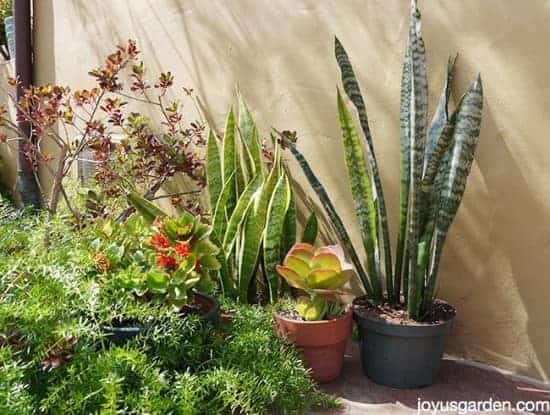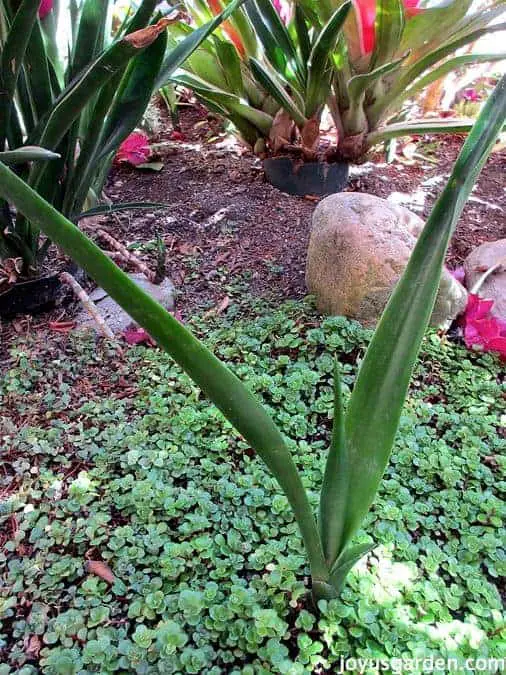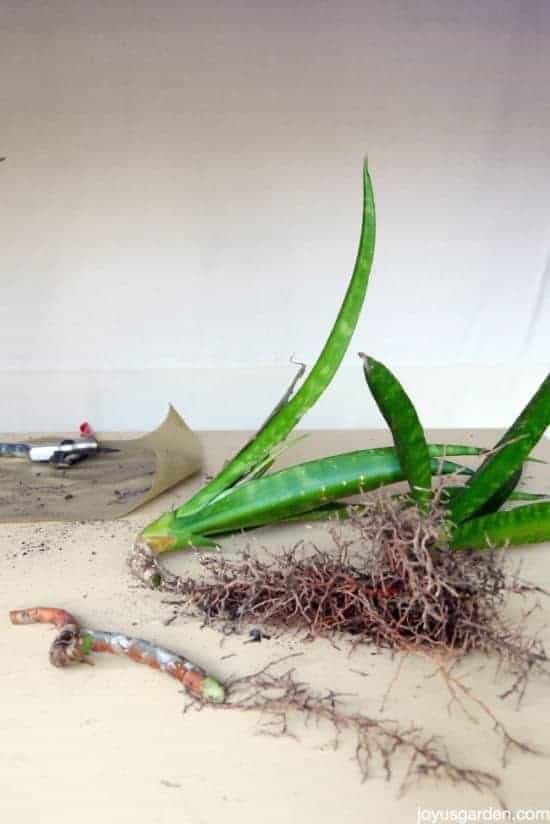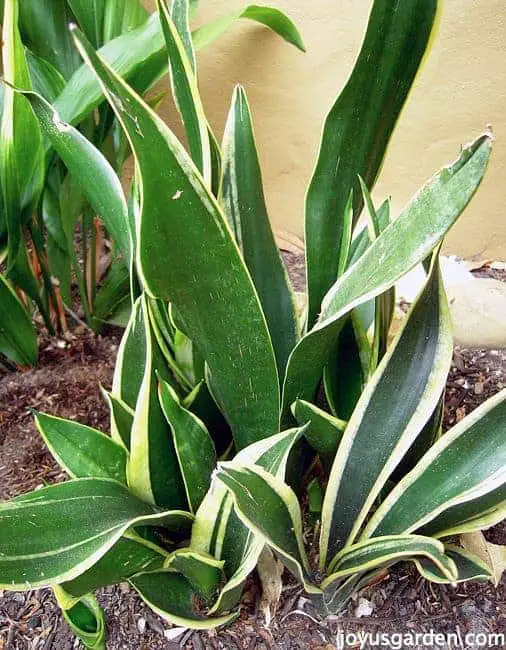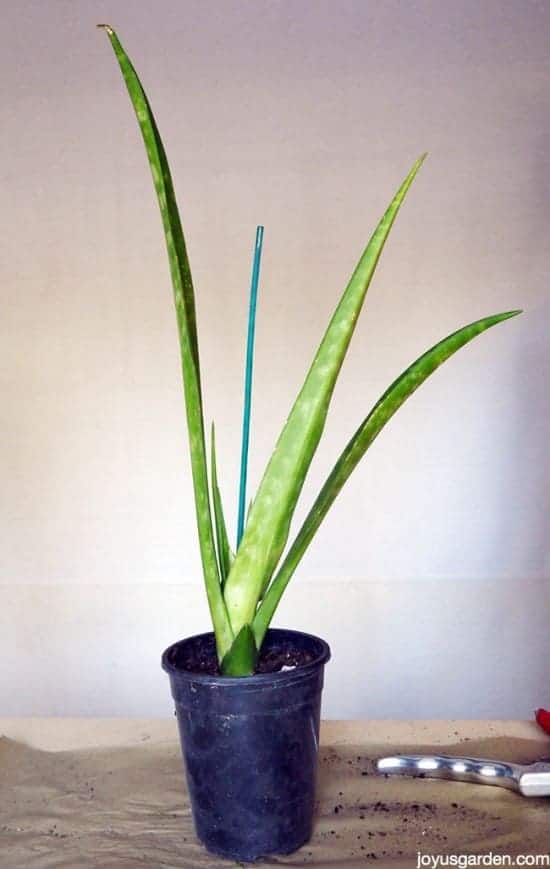I love Sansevierias, and I know I say that about a lot of plants but these spiky numbers have a place in my heart. I grow them in the garden and my house in both pots and the ground. They have quite a few common names so you may know them as Snake Plants, Mother In Law Tongue, Snake’s Tongue, Bowstring Hemp Plant and Devil’s Tongue. Whatever you choose to call it, just know that they’re so very easy to propagate. Today I want to share with you not one but three ways to do it.
Sansevierias grow from rhizomes which eventually root, and in my garden, they like to travel like crazy. You can also grow them from seed (if you can find it) but it’s not nearly as easy to do, or as fast as these other methods. Even though these plants are native to the subtropics and the tropics, they thrive in our dry homes which lack that humidity. They make one mighty fine houseplant!
This is you need for successful Sansevieria propagation:
Soil: A nice light medium which drains well is an idea. I always use an organic succulent and cactus mix, but a good potting soil will do too.
Light: Make sure it’s bright but just know that direct, hot sun is not good.
Water: You don’t want to keep your cuttings or divided plants wet because they will rot out. So, lightly moist but not wet is the ticket. Propagation is best done indoors or on a covered porch so rain won’t mush them out either.
Timing: Propagation is best done in spring but summer and fall are fine too. Just avoid doing it in winter when the plants are resting.
Here are the methods:
By The Rhizomes Which Spread
As you can see in the picture, the single Sansevieria plant in the foreground is creeping through my garden. It’s attached to the mother plant in the back by that “whiteish-grey” rhizome, and there’s another smaller plant forming to the right of it. By the way, I often call them rhizomatic roots, but a rhizome is a modified stem which grows under or very close to the ground. There, I stand corrected … by myself!
What I do is cut them off very close to the plant itself and then let the rhizome heal off for 2-3 days before I plant it. Sometimes the rhizome will have roots already formed and sometimes they’re just starting to bulge out. Use a knife or pruners to do this – just make sure whatever you’re using is clean and sharp.
I took these out of my garden which you’ll see in the video at https://youtu.be/2vqXzY1VnFw . The cut rhizome is in the foreground. The plant on the left only has roots starting to swell at the bottom whereas the one on the right has roots already formed. These two were growing side by side, but you never know with plants!
By Division
This is the plant in the video (https://youtu.be/2vqXzY1VnFw) which I dug up and divided. It fell into pieces on it’s own but I’ve divided Sansevierias which have given me a much harder time. For those, I used a clean trowel, knife, pruners and/or a hand fork. How many plants you get of course depends on the size of the one that you’re dividing.
By the way, Sansevierias love to be pot bound so don’t rush to divide it.
By Leaf Cuttings
For some reason, we missed a picture of this one but you can clearly see it in the video (https://youtu.be/2vqXzY1VnFw). This isn’t my preferred method of propagation, but it’s worth a mention. It’s not as easy, fast or successful as the other two mentioned above. It’s best done on the Sansevierias with solid leaf color because any variation (especially those margins) will be lost.
If you’re game to try it, once again make sure your knife is very clean and sharp. It’s also very important to plant those cut leaf sections in the direction that the leaf has been growing. You’ll see clearly see what I mean and the trick I use to make sure the proper end is planted in the video. If you don’t plant the right end, it won’t grow. By the way, it’s best to let the leaf sections heal off for a couple of days before you plant them.
The plant was so heavy and the soil so light that I have to use a stake to get it to stay up straight!
Whatever method of propagation you choose, having more Sansevierias is a very good thing. I am moving to a new home soon and can’t wait to get much more varieties of Snake Plants. They’re so easy to care for that there’s never too many!
Happy gardening,
Nell

